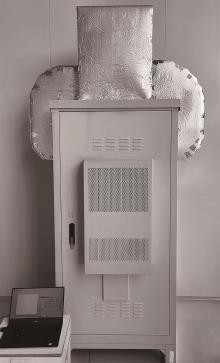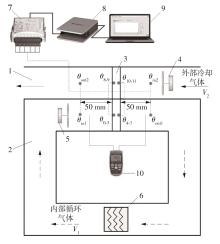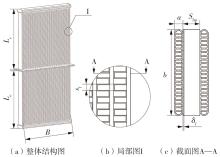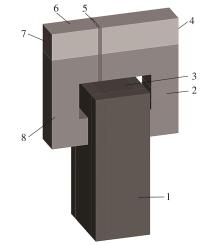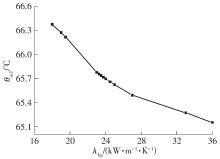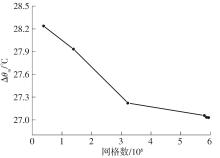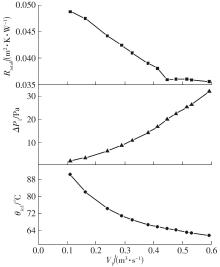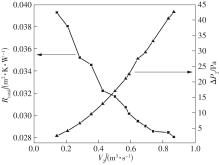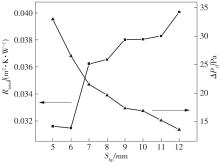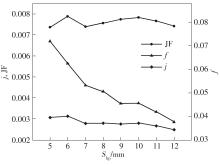| 1 |
雍培,张宁,慈松,等 .5G通信基站参与需求响应:关键技术与前景展望[J].中国电机工程学报,2021,41(16):5540-5551.
|
|
YONG Pei, ZHANG Ning, Song CI,et al .5G communication base stations participating in demand response:Key technologies and prospects[J].Proceedings of the CSEE,2021,41(16):5540-5551.
|
| 2 |
YAO M L, GAN Y H, LIANG J L,et al .Performance simulation of a heat pipe and refrigerant-based lithiu-mion battery thermal management system coupled with electric vehicle air-conditioning[J].Applied Thermal Engineering,2021,196:116878-1-13.
|
| 3 |
柏兴应,简弃非,罗立中,等 .均温板在质子交换膜燃料电池堆热管理中的应用[J].华南理工大学学报(自然科学版),2021,49(2):25-32.
|
|
BAI Xingying, JIAN Qifei, LUO Lizhong,et al .Application of vapor chamber in the thermal management of proton exchange membrane fuel cell stack[J].Journal of South China University of Technology(Natural Science Edition),2021,49(2):25-32.
|
| 4 |
GAN Y H, HE L F, LIANG J L,et al .A numerical study on the performance of a thermal management system for a battery pack with cylindrical cells based on heat pipes[J].Applied Thermal Engineering,2020,179:115740-1-10.
|
| 5 |
李勇,徐沛恳,杨世凡,等 .吹胀型铝质均热板的传热性能[J].华南理工大学学报(自然科学版),2020,48(2):34-41.
|
|
LI Yong, XU Peiken, YANG Shifan,et al .Thermal performance of roll bond aluminum vapor chamber[J].Journal of South China University of Technology (Natural Science Edition),2020,48(2):34-41.
|
| 6 |
GIBBONS M J,MARENGOM, PERSOONS T .A review of heat pipe technology for foldable electronic devices[J].Applied Thermal Engineering,2021,194:117087-1-26.
|
| 7 |
ZHOU W J, LI Y, CHEN Z H,et al .Ultra-thin flattened heat pipe with a novel band-shape spiral wovenmesh wick for cooling smartphoness[J].International Journal of Heat and Mass Transfer,2020,146:118792-1-15.
|
| 8 |
LING L, ZHANG Q, YU Y B,et al .A state-of-the-art review on the application of heat pipe system in data centers[J].Applied Thermal Engineering,2021,199:117618-1-16.
|
| 9 |
ZHAN B F, SHAO S Q, LIN M, et al .Experimental investigation on ducted hot aisle containment system for racks cooling of data center[J].International Journal of Refrigeration,2021,127:137-147.
|
| 10 |
WU Y P, JIA J, TIAN D M, et al .Heat transfer performance of microgroove back plate heat pipes with working fluid and heating power[J].Journal of Thermal Science,2020,29:982-991.
|
| 11 |
YANG C Y, WEBB R L .Condensation of R-12 in small hydraulic diameter extruded aluminum tubes with and without micro-fins[J].International Journal of Heat and Mass Transfer,1996,39(4):791-800.
|
| 12 |
葛洋,姜未汀 .微通道换热器的研究及应用现状[J].化工进展,2016,35(S1):10-15.
|
|
GE Yang, JIANG Weiting .The research progress and application of the micro-channel heat exchanger[J].Chemical Industry and Engineering Progress, 2016, 35(S1):10-15.
|
| 13 |
XIONG T, LIU G Q, HUANG S J,et al .Two-phase flow distribution in parallel flow mini/micro-channel heat exchangers for refrigeration and heat pump systems:A comprehensive review[J].Applied Thermal Engineering,2022,201:117820-1-23.
|
| 14 |
GARCIA J C S, TANAKA H, GIANNETTI N,et al .Multiobjective geometry optimization of microchannel heat exchanger using real-coded genetic algorithm[J].Applied Thermal Engineering,2022,202:117821-1-13.
|
| 15 |
HARUN-OR-RASHID M, JEONG J H .Replacement of present conventional condenser of household refrigerator by louver fin micro-channel condenser[J].Arabian Journal for Science and Engineering,2019,44:753-761.
|
| 16 |
XUE L Z, MA G Y, ZHOU F,et al .Operation characteristics of air-air heat pipe inserted plate heat exchanger for heat recovery[J].Energy and Buildings,2019,185:66-75.
|
| 17 |
ZHANG L Y, LIU Y Y, GUO X,et al .Experimental investigation and economic analysis of gravity heat pipe exchanger applied in communication base station[J].Applied Energy,2017,194:499-507.
|
| 18 |
SHABGARD H, ALLEN M J, SHARIFI N,et al .Heat pipe heat exchangers and heat sinks:Opportunities,challenges,applications,analysis,and state of the art[J].International Journal of Heat and Mass Transfer,2015,89:138-158.
|
| 19 |
WANG Y W, DONG T, CAO W J,et al .Experimental investigation of the laminar flow and heat transfer performance of a harmonica tube with or without mini-fins[J].Applied Thermal Engineering,2020,164:114502-1-12.
|
| 20 |
张双,马国远,张思朝,等 .热虹吸管换热器的换热性能测试与分析[J].化工学报,2014,65(S2):83-87.
|
|
ZHANG Shuang, MA Guoyuan, ZHANG Sichao,et al .Heat transfer performance test and analysis of thermosyphon heat exchanger[J].CIESC Journal, 2014, 65(S2):83-87.
|
| 21 |
LING L, ZHANG Q, YU Y B,et al .Experimental study on the thermal characteristics of micro channel separate heat pipe respect to different filling ratio[J].Applied Thermal Engineering,2016,102:375-382.
|
| 22 |
沈超,刘玉娟,王竹萱,等 .平行流热管管内两相流动可视化实验研究[J].化工学报,2021,72(5):2506-2513.
|
|
SHEN Chao, LIU Yujuan, WANG Zhuxuan,et al .Visualization experiment of two-phase flow in parallel flow heat pipe[J].CIESC Journal,2021,72(5):2506-2513.
|
| 23 |
LEE S, KANG H, KIM Y .Performance optimization of a hybrid cooler combiningvapor compression and natural circulation cycles[J].International Journal of Refrigeration,2009,32:800-808.
|
| 24 |
XIA G G, ZHUANG D W, DING G L,et al .A quasi-three-dimensional distributed parameter model of micro-channel separated heat pipe applied for cooling telecommunication cabinets[J].Applied Energy,2020,276:115544-1-14.
|
| 25 |
MENG F X, ZHANG Q, LIN Y L,et al .Field study on the performance of a thermosyphon and mechanical refrigeration hybrid cooling system in a 5G telecommunication base station[J].Energy,2022,252:123744-1-13.
|
| 26 |
杨辉著,文键,童欣,等 .板翅式换热器锯齿型翅片参数的遗传算法优化研究[J].西安交通大学学报,2015,49(12):90-96.
|
|
YANG Huizhu, WEN Jian, TONG Xin,et al .Optimization design for offset fin in plate heat exchanger with genetic algorithm[J].Journal of Xi’an Jiaotong University,2015,49(12):90-96.
|
| 27 |
陶文铨. 数值传热学[M].西安:西安交通大学出版社,2001.
|
